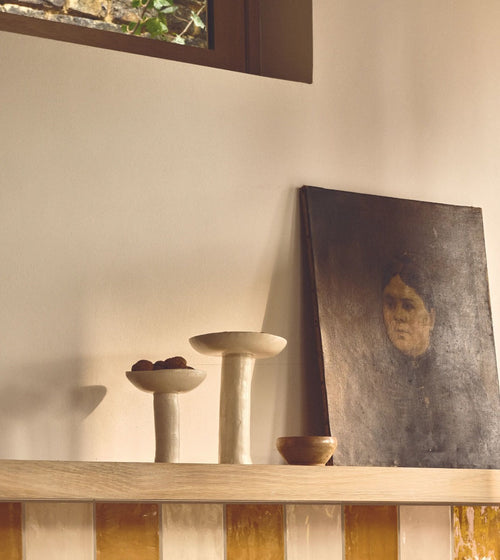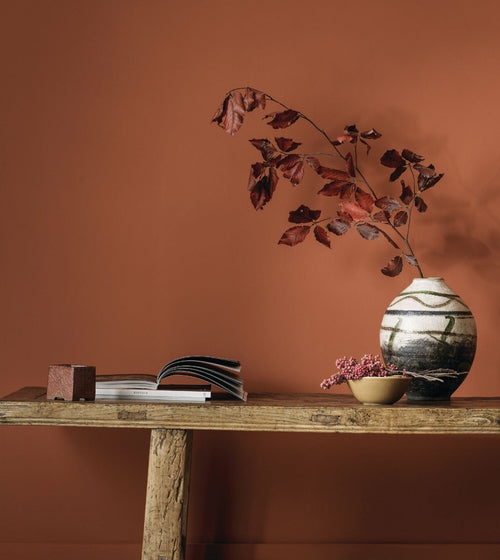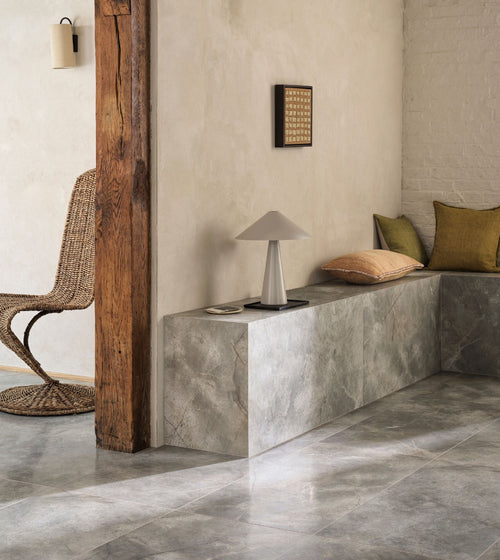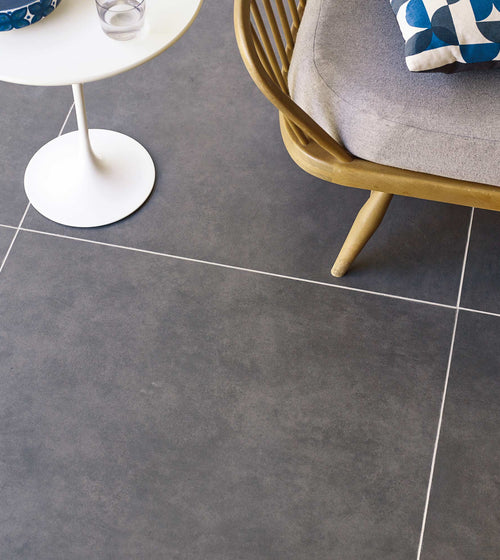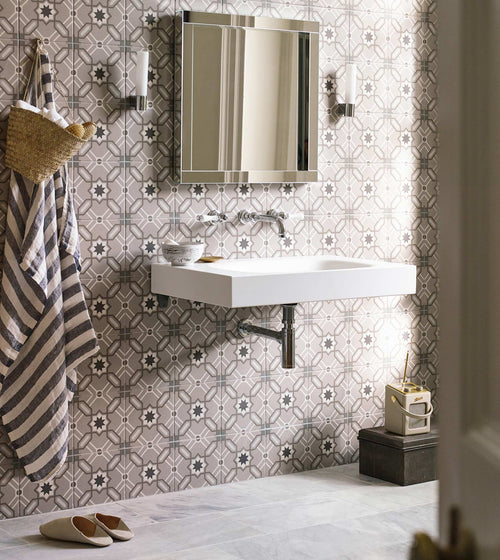Marble tiles vs other flooring materials | Why choose marble floor tiles?
Choosing the right flooring material for your home is a critical decision that affects both the aesthetic appeal and functionality of your environment. Floor tiles have become a design staple, with one of the top contenders being marble. This natural stone has become a timeless symbol and is used as flooring in popular areas such as the kitchen and bathroom. So, when looking for your next flooring material, ensure that if you add marble into the mix, you compare it with other viable options to find the most suitable choice for your requirements.
In this guide, we will compare different flooring materials, including wood and porcelain, against marble floor tiles, with our recommendations suggested throughout.
Click on the link to jump to that section:
- Marble tiles vs wooden flooring
- Marble tiles vs other stone flooring
- Marble tiles vs porcelain tile effects
- How to choose the right flooring material
- Frequently asked questions
Compare natural wood flooring, like laminate, and marble tiles.
Compare the difference between marble and other natural stone tile flooring.
Compare natural marble against marble effect porcelain lookalike tiles.
Discover our top tips for finding the best floor tile material and what to consider.
Read the most common queries on marble floor tiles.
Marble tiles vs wooden flooring
Marble floor tiles have long been celebrated for their timeless beauty and elegance. Originating from natural stone, each tile boasts unique veining patterns that add a luxurious touch to any space. In comparison, wooden flooring offers a warm, organic feel that varies greatly depending on the type of wood used, particularly laminate and hardwood.
Both options are incredibly popular in homes, albeit in different areas. Aesthetically, marble offers a more formal and opulent look, ideal for grand entrances and luxurious bathroom floors. Wooden floors provide a cosy and inviting atmosphere, making them perfect for living rooms and bedrooms.
Marble, while durable, is susceptible to scratching and staining, requiring regular sealing and careful cleaning with pH-neutral products. On the other hand, wooden flooring, particularly hardwood, is also prone to scratches and dents but can be refinished multiple times, extending its lifespan significantly. Due to their sensitivity to moisture, wood is not recommended for bathroom floors, making marble the best choice for these areas.
Rather than wooden flooring, consider marble tiles that come in darker shades of brown. Our Blends collection, available in triangle, star, and circle shapes, includes marble tiles in the classic white marble Carrara look, and Castano, with hues of brown and grey for a darker aesthetic.
Our top marble pick

Shop the Blends Castano Circle tile here
If you want to replicate the look of wood, consider porcelain floor tiles. Our wood effect tiles offer all the beauty of natural wood, like birch and elm, with porcelain's durable and hardwearing qualities.
Browse our entire range of wood effect floor tiles here.
Marble tiles vs other stone flooring
When comparing marble tiles to other natural stone flooring options, such as encaustic or travertine, you should consider factors such as durability, maintenance, and appearance. For example, one popular stone choice is slate. Slate floor tiles offer a rustic and textured appearance compared to the polished luxury of marble.
Similar to marble, limestone is a sedimentary rock but tends to have a more subdued and soft appearance. Sharing marble’s susceptibility to staining and scratching, limestone floor tiles can provide a classic look for traditional settings, popular in a calming bathroom or hallway.
Marble tiles vs porcelain tile effects
Porcelain floor tiles have gained popularity due to their versatility, durability, and ability to mimic the look of natural materials, including marble. Technological advancements in tile manufacturing have enabled porcelain tiles to replicate the veining and hues of marble so convincingly that it can be challenging to distinguish between them.
One of the most significant advantages of porcelain over marble is its durability. Porcelain is highly resistant to stains and moisture, making it an excellent choice for areas with high footfall and exposure to water, such as kitchens and bathrooms. It also requires less maintenance than marble, as it does not need sealing and can be easily cleaned.
For the best of both worlds, we would recommend marble effect floor tiles. These lookalike tiles replicate the beauty and luxury of marble, in classic hues such as white Carrara and Calacatta, with the functionality of porcelain.
How to choose the right flooring material
Selecting the right flooring material involves several factors: aesthetic preferences, practical needs, budget, and the specific conditions of your space. Here are some key considerations to help guide your decision:
Aesthetic preferences: Think about the overall style and atmosphere you want to create in your space. Marble tiles provide a luxurious, classic look, while wood offers warmth and a natural feel. Other stone floors like granite and slate bring different textures and tones, whereas porcelain can provide versatile aesthetics at a lower cost.
Durability and maintenance: Consider the level of wear and tear your flooring will endure. Marble and wood both require more maintenance to keep them looking their best, whereas porcelain offers higher durability and lower maintenance needs. High-traffic areas, such as bathroom floors, exposed to moisture might benefit more from porcelain.
Cost: Budget is always a crucial factor. Marble and other high-end stone tiles are generally more expensive than wood, slate, and porcelain. However, the initial investment can be worthwhile if you prioritise the unique beauty and potential home value increase associated with marble or granite.
Comfort and practicality: Consider how the flooring feels underfoot and its suitability for different areas of your home. Marble and other stones can be cool to the touch, and refreshing in hot climates but might feel cold in cooler regions unless paired with underfloor heating.
If you are struggling with your tile flooring choice, consider a bespoke design service. Fired Earth provides an in-depth consultation into your preferences, using 3D visualisations and mood boards to bring your ideas to life. Whether you want marble floor tiles or are interested in other possibilities, a design service will help ensure the chosen flooring works to your best interests, style preferences and specific room requirements.
For more information, contact the Fired Earth team today, or book your design appointment with our experts here.
Frequently asked questions
What are the cleaning requirements for marble floor tiles?
To clean marble floor tiles, use a pH-neutral tile cleaner specifically designed for marble to avoid damage. Sweep or vacuum regularly to remove dirt and debris, preventing scratches. For deeper cleaning, mop with warm water and a pH-neutral cleaner. Consider sealing the marble to protect against stains and maintain its finish.
Browse our entire collection of tile fixing, cleaning and maintenance products at Fired Earth here.
